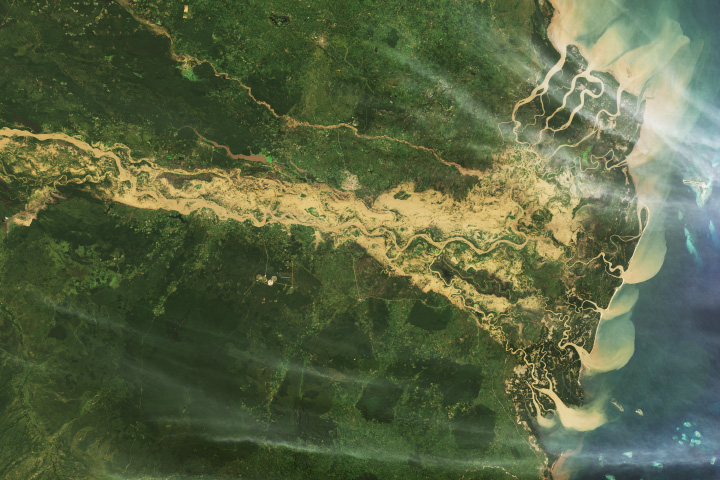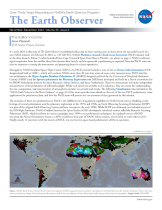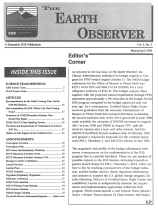- Home
- Missions
- Data
- Communications
- People
- The Earth Observer Newsletter




Recent Imagery
You will be directed to the NASA Visible Earth webpage when you select Images by Mission below, or click on the images at right that are randomly generated to represent four out of all possible topics.
The Earth Observer: Mar - Apr, 1994
In This Issue
Click title below to view page
SCIENCE TEAM MEETINGS
AIRS Science Team ... 3
GLAS Science Team ... 7
ARTICLES
Recommendation for the Nodal Crossing Time for the EOS-PM Platform ... 13
Data Assimilation for EOS: Where's the Data Coming From? ... 17
Production of TOPEX/Poseidon Altimetry Data Record Has Begun ... 21
ED HS-The ECS Data Handling System ... 25
The Roles and Requirements of Visualization in NASA's EOS Era ... 27
Update on Data Support at the Goddard DAAC ... 32
ANNOUNCEMENTS
Convergence Decision ... 12
Convergence Plan ... 12
EOS Ocean Interdisciplinary Workshop ... 19
MTPE Education Activities: Globe .... 20
MTPE Education Activities: Summer 1994 ... 20
Message to Article Contributors ... 23
Landsat Decision .... 24
Landsat Plans ... 24
GCDIS Available .... 26
Vegetation Preparatory Programme ... 26
Pathfinder Conference ... 31
GOES-Next Launched ... 34
NSUN Working Group Meeting ... 34
EOS Science Calendar ... 35
Global Change Calendar ... 35
The Earth Observer Information/Inquiries ........ Back cover
Editor's Corner
Michael King, EOS Senior Project Scientist
As reported in the last issue of The Earth Obseroer, the Clinton Administration submitted its budget request to Congress for FY95 (which begins October 1). The NASA budget submission for the Office of Mission to Planet Earth was $455.1 M for EOS and $284.9 M for EOSDIS, for a total obligation authority of $740 M. This budget request, taken together with the projected runout requirement through FYOO, represents approximately a 90/o reduction in the budget for the EOS program compared to the budget approved only one year ago. As a consequence, Goddard Space Flight Center received guidelines from the Associate Administrator of Mission to Planet Earth that included directions to maintain the launch readiness date of the AM-1 spacecraft at June 1998, make available the elements of EOSDIS necessary to support AM-1 in June 1998 and TRMM in August 1997, split the altimetry mission into a laser and radar mission, hold the ADEOS II/SeaWinds launch readiness date at February 1999, and prepare a request for proposals for the common spacecraft (PM-1, Chemistry-1, and AM-2) for release in May 1994.
The magnitude and profile of the budget adjustments have severe consequences on the implementation of the EOS program that is currently baselined. There are any number of possible impacts to the EOS Mission, including 9-month or greater launch delays for PM-1, Chemistry-I, AM-2, Color, etc. Due to the far reaching consequences of this budget reduction, and the further need to obtain important observations and analyses to support the U.S. global change program, Dr. John Klineberg, Director of Goddard Space Flight Center, has established 3 teams to independently examine the requirements and implementation approaches within. the EOS program. These teams include a core Science Team (which I chair), a Project Team (chaired by Chris Scalese, AM Project...
Read more...

